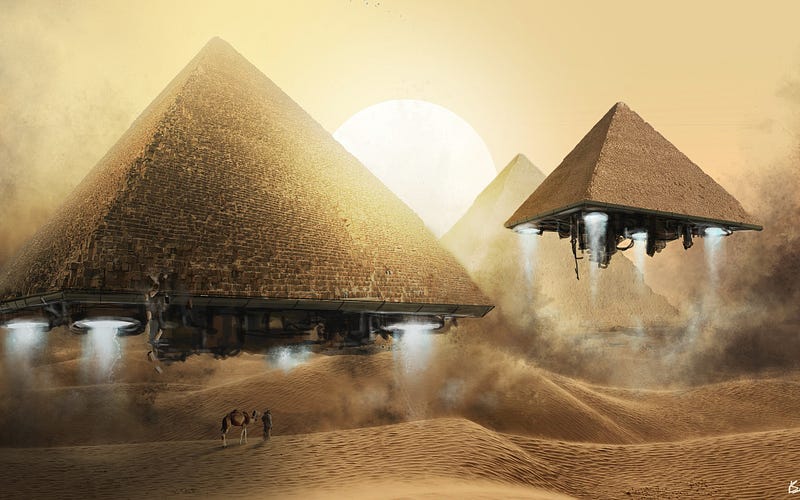The Pyramid Paradox: Unraveling the Alien Myth Behind Ancient Wonders
Written on
Chapter 1: The Allure of the Pyramids
The great pyramids of Egypt have always fascinated us, standing as monumental testaments to the ingenuity of ancient cultures. Some enthusiasts, however, have taken their admiration a step further, suggesting that these grand structures were crafted by advanced extraterrestrial beings. This lighthearted examination aims to debunk the ancient alien theory while considering the technological advancements that were supposedly overlooked.
First, let's acknowledge the incredible achievements of the ancient Egyptians. The construction of the pyramids demanded not only meticulous planning but also immense labor and exceptional engineering skills. By dismissing the ancient aliens narrative, we can fully appreciate the astounding accomplishments of our human forebears.

Chapter 2: Critiquing the Ancient Alien Theory
If we accept the claims of shows like "Ancient Aliens," we might expect that these advanced extraterrestrial beings left behind groundbreaking technology. After all, if they could navigate galaxies, they would surely have shared some of their cutting-edge innovations, right? Unfortunately, this is where the alien pyramid theory begins to falter. Here are five simple arguments against it.
Missed Technological Opportunities
- Warp Drive Papyrus: Picture aliens equipped with warp drive technology, poised to share secrets of rapid transportation. Instead, we received beautifully crafted hieroglyphic papyrus—visually appealing but far from revolutionary for intergalactic travel.
- Universal Translator Sandstone: A universal translator would have been an extraordinary gift for bridging species and cultures. Yet, ancient Egyptian communication relied solely on intricately carved hieroglyphs, leaving scholars puzzled even today.
- Holographic Sphinx Simulator: An advanced civilization capable of erecting monumental pyramids should have provided us with cutting-edge holographic technology. Imagine walking with a virtual Sphinx, engaging in riddles without the risk of being devoured. Sadly, the only holograms we possess are those from science fiction films.
- Anti-Gravity Sand: If these aliens could manipulate gravity, they could have imparted that knowledge to humanity, transforming transport and construction. Instead, we are left with ordinary sand, firmly grounded and resistant to defying gravity.
- Nanobot-Building Scarab Beetles: While scarab beetles were revered in ancient Egypt, what if they were actually sophisticated nanobots? Unfortunately, we have yet to see these miniature construction workers buzzing about our cities.
In conclusion, while the idea of ancient aliens constructing the pyramids is certainly entertaining, it lacks substantial evidence and logical reasoning. Instead, let us celebrate the remarkable achievements of human civilization and honor the incredible legacy bequeathed to us by our ancestors.
The pyramids may not have bestowed upon us warp drives or anti-gravity devices, but they do remind us of our human potential and the endless possibilities that lie ahead. So, the next time you find yourself admiring the pyramids, remember that their grandeur is a testament to human creativity and capability. And if you ever come across a hieroglyphic message about warp drives, universal translators, or anti-gravity technology, do let us know—we'll be ready with our papyrus, eager to decode the mysteries of these so-called extraterrestrial builders.